To the debate of wasps, the dialectic of monkeys, the chirping of statistics it offers (tall pink flame made of stone and air and birds time in repose on water) the architecture of silence”
Translation “El Mausoleo de Humayún by Octavio Paz
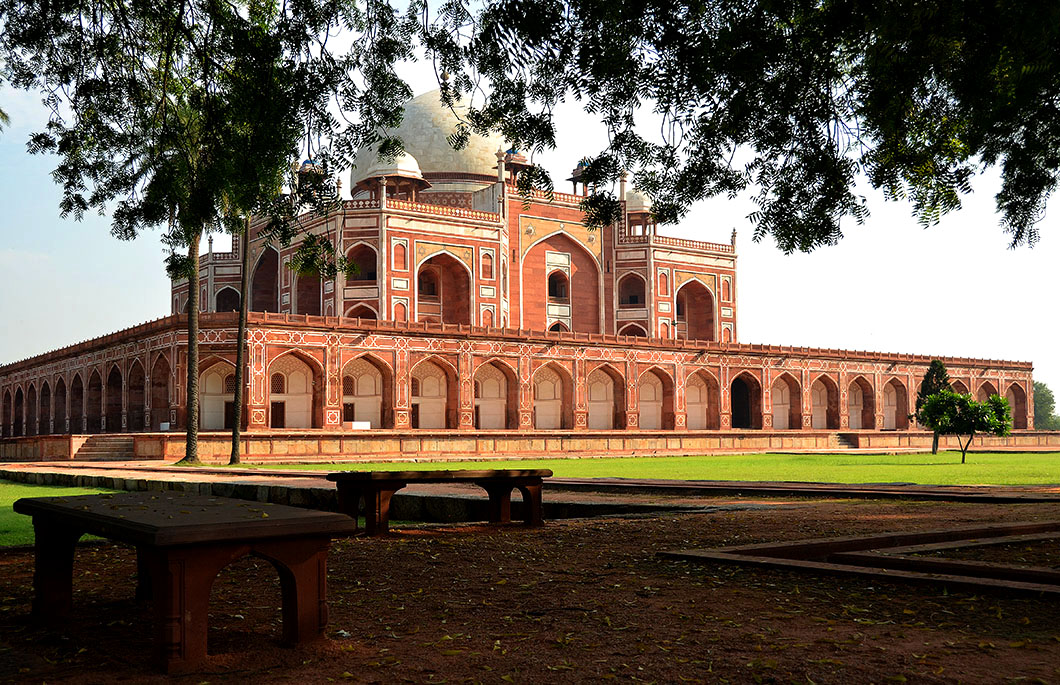
Any experienced traveler should know better than to visit monuments that generate heavy tourist footfalls on weekends. The first Saturday after a much publicised re-opening post a controversial six year restoration, had to be far, far worse.
But we had signed up for a walk around the Nizamuddin neighbourhood and it seemed imprudent to shuttle up and down within our short time frame. That is the reason we landed at the grand mausoleum of Humayun that gloomy afternoon, along with a few hundred other people.
To add to our woes the rain Gods thundered overhead and before we knew it we were huddled under an arched recess, Ramit’s stories about Delhi’s complex history partly succeeding in keeping our minds off the incessant, unseasonal downpour. On hindsight, not a bad ambience in which to soak up one’s cultural heritage.
We couldn’t wait there forever, however, so we made a dash for the exit in search of an auto-rickshaw. I could see that the doorman of our posh lodging seemed distinctly unimpressed by our wet and bedraggled selves and our choice of transport.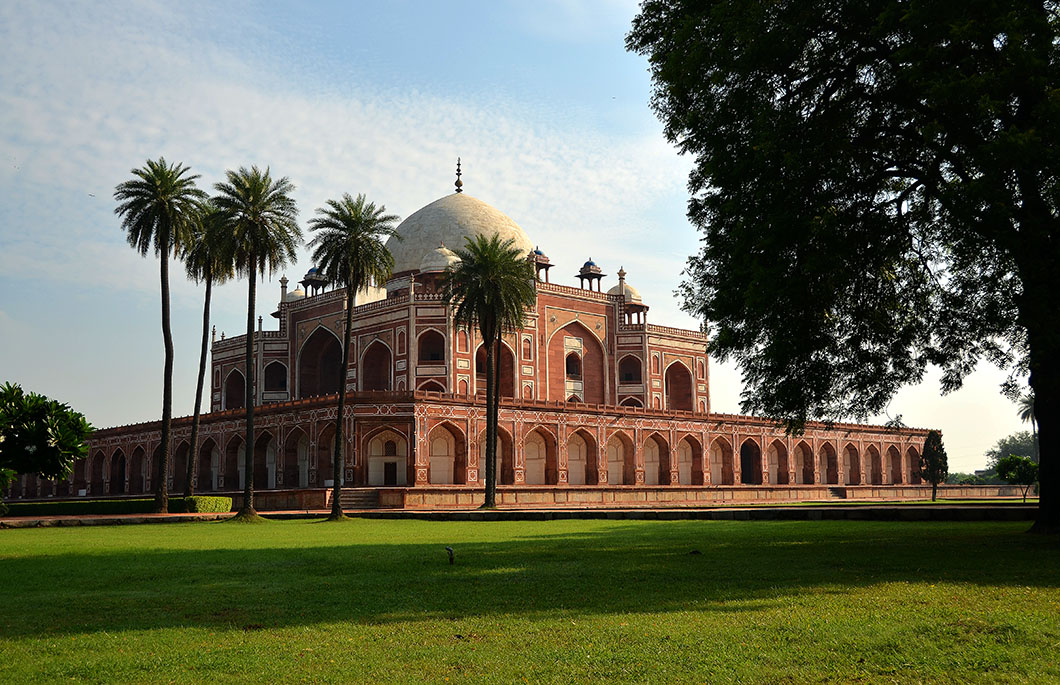
I was disappointed and was not about to leave town without decent photos of the ‘Taj Mahal of Delhi’. So we returned very early Monday morning, and spent a couple of sublimely solitary hours revelling in the magnificence of the necropolis….in the serene silence of those pink stones. Paz had it down pat.
The first mausoleum of a Mughal emperor in India (his father Babur’s remains lie in the Bagh-e Babur in Kabul, Afghanistan), as well as one of the first garden-tombs in the subcontinent, Humayun’s tomb is a true labour of love by the emperor’s grieving chief consort (and cousin), Bega Begum.
The site, adjacent to the beautiful (and older) tomb complex of an Afghan noble, Isa Khan Niyazi, was chosen for its proximity to the river Yamuna (that has since changed course) and the resting place of Sufi saint Hazrath Nizamuddin Auliya. The unprecedented scale of the finished monument is said to have defined subsequent Mughal architecture apart from being the inspiration for the Taj Mahal in Agra.
Bega Begum herself is buried in an antechamber, along with Humayun’s junior wife Hamida Begum (mother of Akbar the Great), and his great, great grandson Dara Shikoh (the prince who was beheaded by dear brother Aurangazeb, who is then alleged to have presented his trophy to their ailing father on a platter!)
Many more relatives lie interred in more antechambers, but it is hard to tell the sarcophagi apart except for carved symbols that distinguish the sex of each occupant. The exquisite, creamy marble caskets carry wounds from the time when this complex served as a refugee camp. Vandalism by lost souls, to whom the glory of their past could not have measured up to a belly full of food or a roof over their heads.
Ironically this was also the final refuge of the last Mughal emperor Bahadur Shah Zafar before his capture and banishment by East India Company forces.
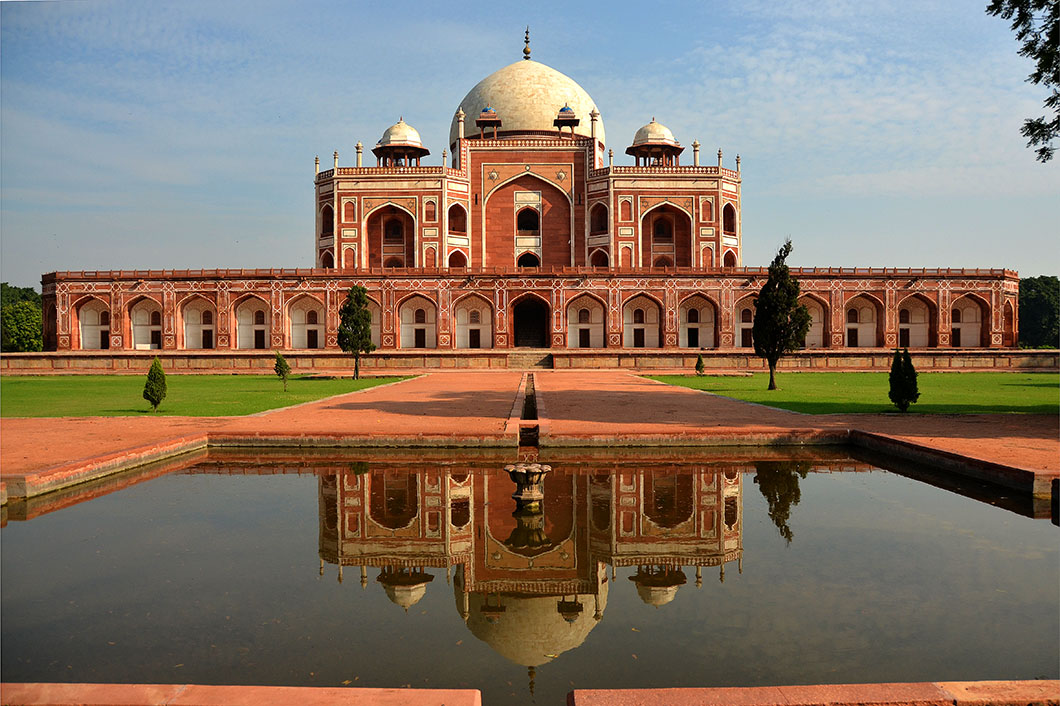
Outside, the fountains hadn’t been turned on yet. But the reflection pools mesmerised. What bliss to not have people carelessly wander into my frame!
The blinding white double dome and the freshly painted surfaces have received a lot of flak from conservationists, and a debate rages about how much (restoration) is much. I usually prefer ancient and timeworn, but this multi million rupee conservation project by the Aga Khan Trust for Culture, with craftsmen flown in from as far as Uzbekistan to retrain artisans in skills lost, does not jar at all.
Just one more monsoon, and any harsh new colours and contours should mellow to perfection.
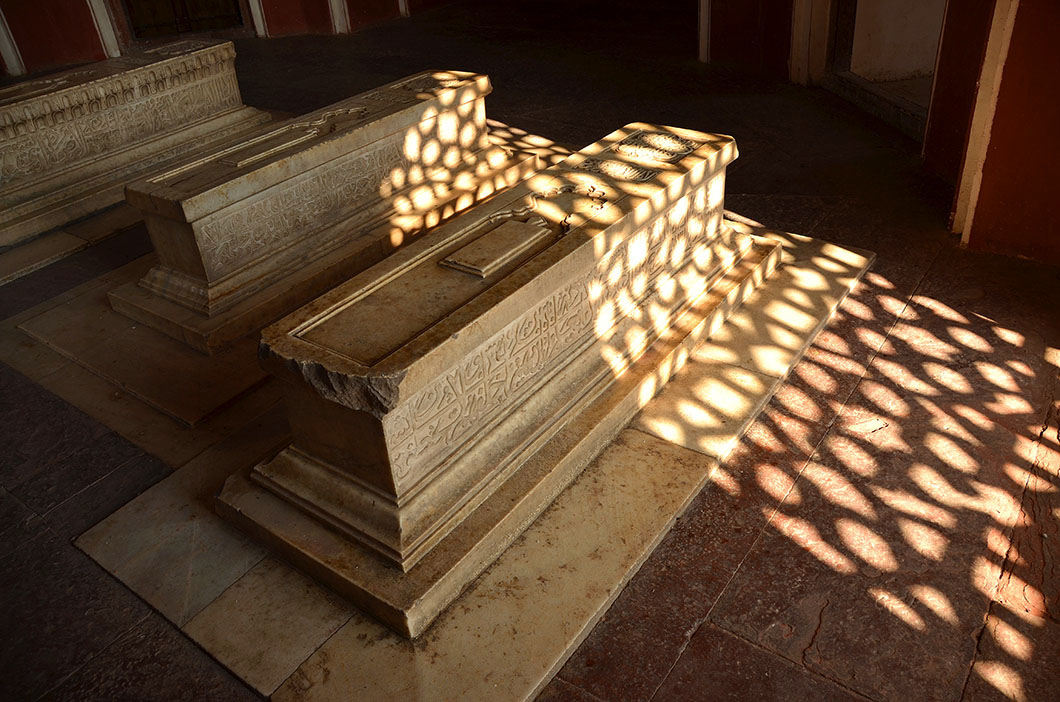

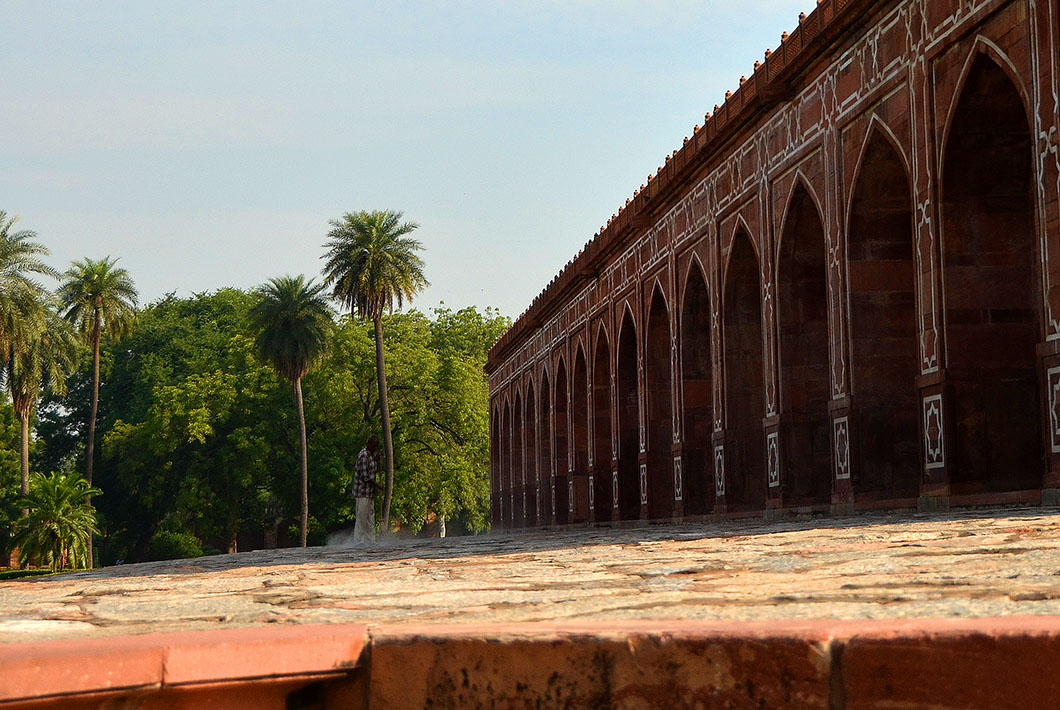

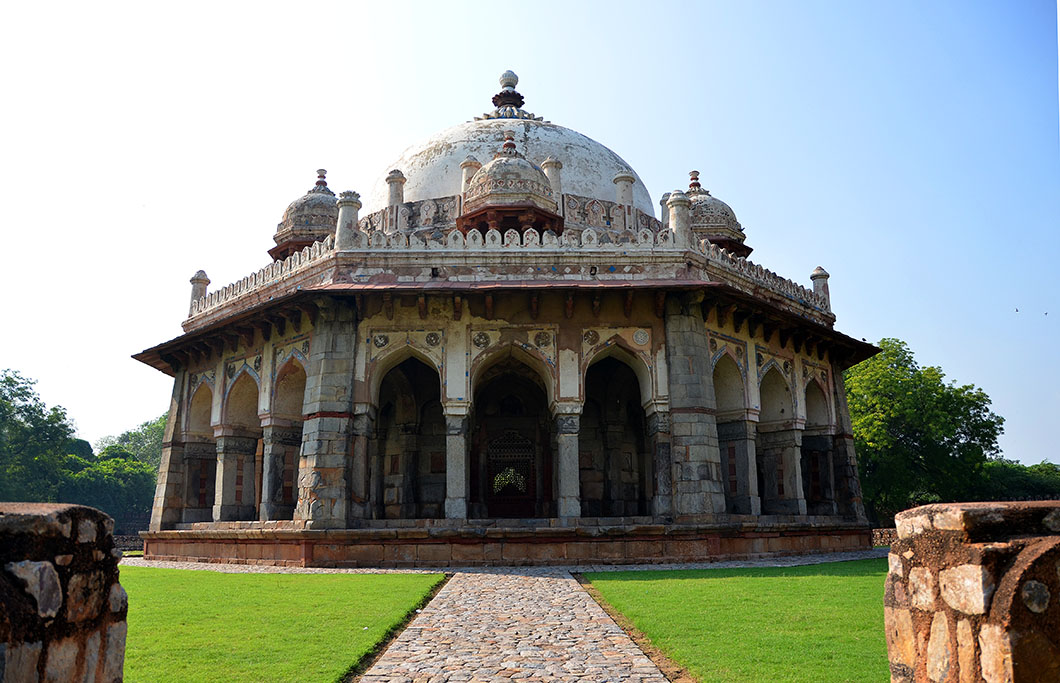
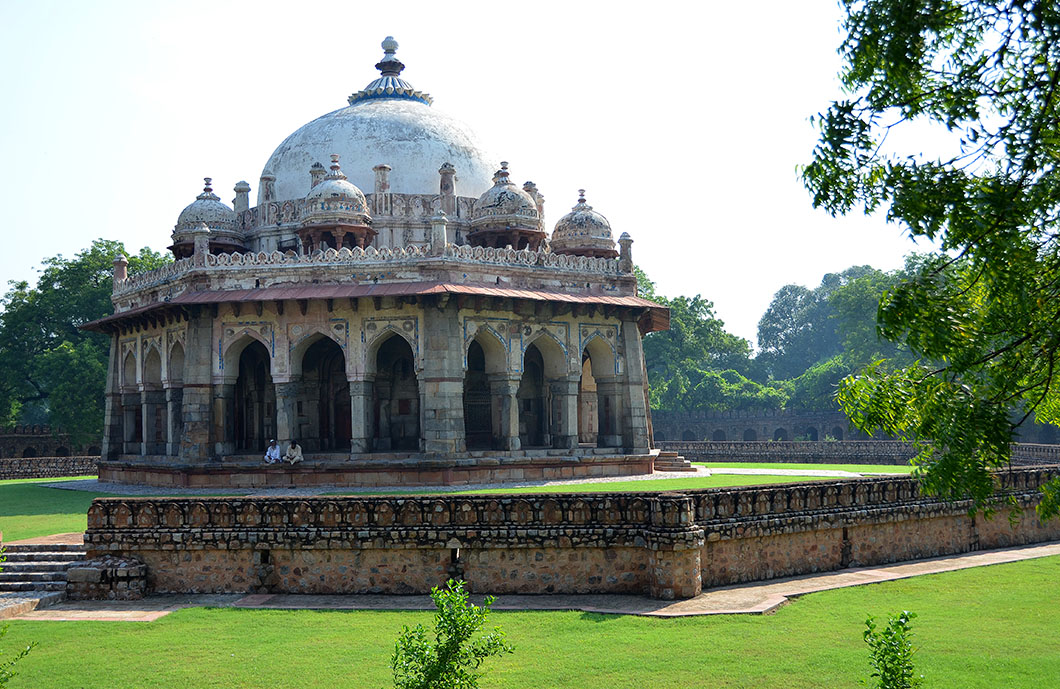
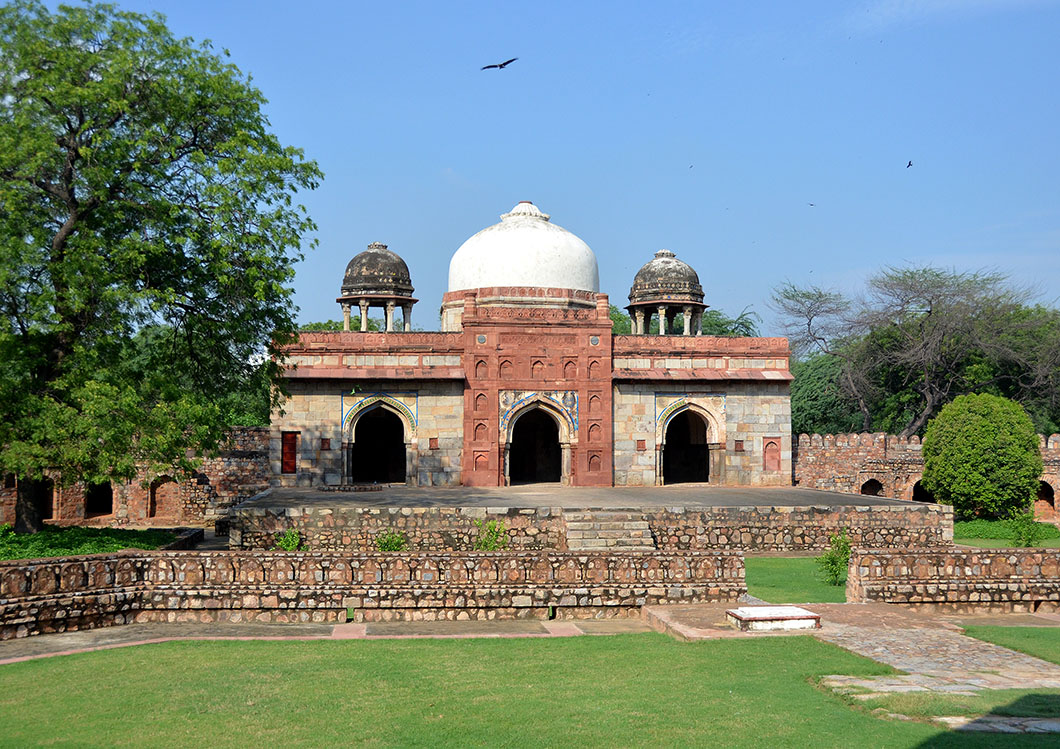
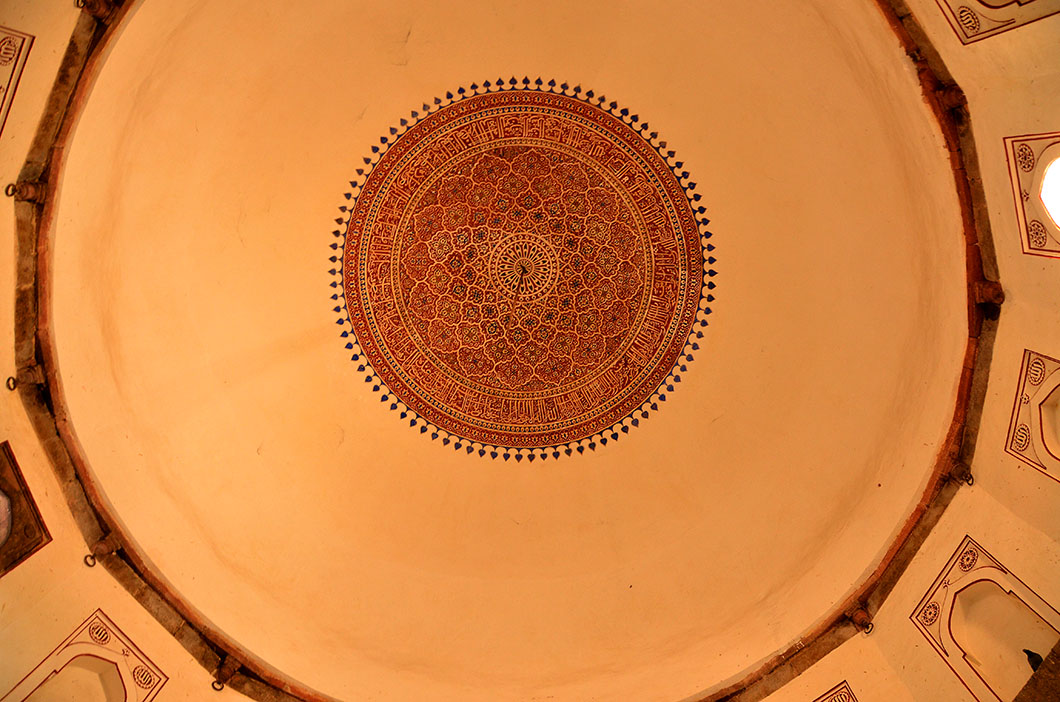
Until next time….happy travels, no matter where life takes you.
Related posts:
Giving Delhi Its Due
The Tomb Of Safdarjung
The Mausoleum Of Akbar The Great



Beautifully captured images. I was there in Jun 2010, you can imagine how hot the weather was!
It is heart breakingly beautiful… and remains so even after many visits. You got some breathtaking pictures here.
Beautifully captured images from Delhi. I just love that city! In between all the chaos it’s actually a pretty green city with a lot of interesting places. believe it or not, but when I traveled in India I actually ended up spending 3 months in Delhi!
I was surprised to discover that myself after all the bad press Delhi has been receiving! Thank you Cardinal.
I suppose the most important ingredient for a great photo is a great subject. These are just some amazing structures. A pleasure to view.
Couldn’t go wrong with a subject like that really Stephen. I think I enjoyed this more than the Taj 🙂
Amazing Pictures to go with the perfect post Madhu. Love your analogy.
Thank you Suchit. Happy to ‘meet’ you 🙂
Beautiful gallery! I would love to follow you around for just one day! (or look out your kitchen window : )
Always welcome Kathryn…it would be my pleasure, as it is to see you here 😀
Thats a wonderful dream Madhu ! : )
It is a great pleasure visiting this impressive building with you, and especially learning a bit about its history. The pictures are wonderful.
Thank you Shimon. It is my pleasure to have you come along with me 🙂
What a fabulous piece of history! I love your photos, particularly the reflection image and your header photo. 🙂
Thank you Luann. Seems like reflections were a big thing in that period! I have at least half a dozen fro different sites! 🙂
Wonderful photographs, Madhu! Love the way you composed the first one.
Thank you Uday. Happy to hear that from you.
I am so delighted you posted this. What a splendid palace, restoration controversy aside. Capturing its silent elegance on Monday morning was well worth going back. The Mughal architecture is astounding and your photos cover it beautifully. The Delhi by foot tours look interesting. Several years ago I read “The Twentieth Wife” and “The Feast of Roses” by Indu Sundaresan, gifts from my daughter. Historical fiction (palace life) during the Mughal period. Loved the stories.
I haven’t read either of those books, nor any by Indu Sundaresan for that matter! Need to remedy that. Glad you enjoyed tagging along to Humayun’s tomb Lynne. Don’t tell anyone, but I do prefer it to the Taj, a wee bit 😀
Something new; I had never heard of example of “the architecture of silence”. The resemblance to the Taj Mahal (or the other way round, I guess) is apparent. But that seems feminine to me, whereas this is solidly (stolidly?) masculine. Appropriate, I think. Your historical comment is so interesting, and the photo, the blanket of light, is spectacular.
That title is lifted from Ocavio Paz’s poem Judith. And he was using poetic license to create his own architectural style! Glad you enjoyed this. Thank you for spending so much time with me today 🙂
LOvely pictures and place. My favorite place in Dehli! Namaste . . . .
Thank you Anne. And namaste back 🙂
very very clean picture!!
Thank you Sahiba 🙂
Madhu, I’m so glad you returned to Humayun’s Mausoleum a second time – those photographs without people convey such a blissful sense of peace. And what luck that the fountains had not yet been turned on, that shot with the reflecting pool is a real winner. 🙂 I had no idea this was the inspiration behind the Taj, but now that you mention it, there is clearly a resemblance between the two!
Thank you James. Does seem like the Gods were on our side after all 🙂
The inspiration for later monuments refers to the style more than the appearance. The raised plinth, the octagonal facade, and the borrowed Hindu elements like the umbrella shaped pavilions. The Taj is a lot more sumptuous, but this simpler building appeals to me far more for some reason.
The rain gods were smiling on you Madhu! What bliss to come back and have all this to yourself. All great shots and I adore the honeycomb light over the tombs.
Seems that way Patti 🙂
The shot of the honeycomb light over the tombs is my personal favourite too.
Such beautiful architecture, Madhu. I’m so glad that you had the opportunity to get these magnificent pics. I absolutely love the reflection one. 🙂
The light was just right Sylvia. Thank you 🙂
capture of reflection is too good ! I think visiting lonely places gives more opportunity for photography !
Thank you Paresh. Too many people are certainly not great for photography 🙂
I am so pleased you returned on the calm sunny morning, the photos are wonderful! We were only briefly in Delhi, but next time we will know where to wander ….
Thank you Christine. You will not be disappointed 🙂
Not only do I enjoy your high quality pictures but your English expression is superb! Those pictures brought back many happy memories of trips around the Delhi/Agra and beyond locations. I’m always fascinated by history and it was nice to be reminded of that too. It brought to mind one of my trips, this time with my wife and two girls. One of the touts wanting to impress me with his English asked which of my “wives” I liked best. lol
Appreciate your kind words Ian. Thank you very much.
I can’t believe the tout said that! How presumptuous of him. Curious to know your response 😀
A very handsome building, beautiful stone, and lovely repeat motives give it a rhythmic gait. Death was a big deal then and there.
It was! But not as big as in Egypt 🙂
I’ve been there, in 2005 on the day I landed in India. I loved it and struck lucky as it was really quiet. 🙂 thanks Madhu.
The re opening must have lured a larger crowd then Gilly.
Ah, Madhu wonderful photos! I’m so glad you went back… 🙂
Thank you Marina 🙂
Magnificent architecture! Wow, six year renovation. These are stunning shots, Madhu. Thank you for the narrative! The ground looks so green, maybe because of the rain they get.
Thank you Amy. Those lawns were added later by the British. I believe it was originally a formal fruit and flower garden reminiscent of their earlier homes in Central Asia and Afghanistan!
The light and shadows are exquisite, Madhu!
Yes those trellises make for some dramatic shadows Riba. Happy to see you here 🙂
Beautifully narrated photo tour for us again, Madhu. What a spectacular place!
Thank you Angeline. It is an architectural gem on par with the Taj. And more atmospheric too, because one can never be alone in the Taj. Not unless you are a head of state at least 🙂
Silence and solitude make wonderful partners. “Reflection” captures that sense of calm and wonder one feels in quietude: lovely and inviting images.
Thank you Sally. It is amazing what a difference solitude makes to your enjoyment of a place like this.
It’s incredible that you got this place all to yourself at any time! How nice. I sometimes cringe, too, at having to visit places at peak times with a million other people. But sometimes, you just have to. Glad you could go back and enjoy the silence.
I was amazed too Juliann, considering the number of people that were there the day before. I think the locals go there in the evenings, and the coach tours only arrive after ten, since it is kind of midway between other sites.
Of late I allow myself one spare day, in the larger cities especially, for just this kind of contingency.
I’m sorry to hear about the rain and how it ruined your first day there. But good things always come in the end, don’t they? That perfect reflection of Humayun’s tomb is really something worth waiting. One more monsoon, then it will be a true magical place, indeed.
You are right Bama. And it was probably for the best, or we wouldn’t have returned to admire it in such solitude! Yes, the sharpness needs to fade a bit and it will be truly magical. I need to return on a moonlit night next 🙂
What a brilliant reflection in the picture of Humayun’s tomb. The one in the header pic is also cool!
The header – I have included it in my slideshow as well – is my favourite of this entire set Paula. Muslims in India drape graves with cotton or silk sheets to show respect. Inside the shadowy recesses of the antechamber, it really felt like a beautiful ‘chadder’ of light!
🙂 nicely put “chadder” of light. Thank you for sharing so much cultural facts with us, Madhu 🙂
My pleasure entirely Paula 🙂
Beautiful.
Thank you Mary. I think it is on par with the Taj, even with far less ornamentation.
Great post, very informative and stunning images as ever! thanks for taking me on this tour… 🙂
A pleasure to have you come along Sue. Thank YOU 🙂
Reblogged this on yasarnorman.
Thank you Yasar.
Architecture of silence: beautiful words. Looks like a beautiful renovation, too, despite the crowds.
Yes. I just discovered Paz’s poems on India! Had no idea he served as ambassador at one point. And yes, the renovation seems to have gone well for a change. We are famous for botching things up. They apparently had to remove one million kilos of concrete from the roof!! Unlikely that was from the Begum’s time 😀
Very well captured and really appreciate so much
the way you (always) follow up in writing in a very interesting way… 🙂 🙂
Thank you so much Ledrake. I always wonder how many really read through. Happy you do 🙂
🙂
This architecture would keep me silent as I gazed at it. These buildings are truly beautiful.
Aren’t they Colline? The smaller Isa Khan complex is equally stunning.
I would love to be able to see inside.
Wow!Awesome:)
Thank you Falcon!
You’ve captured some magnificent photos, Madhu dear. I love especially the Reflection – almost a mirror image.
I’m quite familiar with Mughal history but enjoyed the brief you provided – always great to refresh memories 🙂
Yes, the Mughals were typical of old dynasties – as found in other regions from Turkey to China.
Peace,
Eric
Thank you Eric. Fratricide was probably necessary for survival in a polygamous royal household. Doubt they even remembered all their siblings names! Even Ashoka is supposed to have killed his half brother! Wonder how their walks with the Golden Being went!! 😀
Wonderful architecture and beautifully photographed. I especially like the lighting in Humayun’s tomb.
Thank you David. It was worth getting up early for.
Thank you so much for sharing this. I have been in Delhi for over three decades, but have never visited Humayun’s tomb which is just about 15-20 minutes from my place. It indeed looks like the Taj Mahal of Delhi. Will make a trip soon. Your pictures are making me want to have a glimpse by myself. 🙂
Ha Rekha, good to know there are others who take things in their own neighbourhood for granted! Have no doubt you will get to it before I get to the Shore temple 🙂
lovely pics
Thank you Soumya. A belated happy Diwali to you 🙂
Many thanks Madhu and same to you too